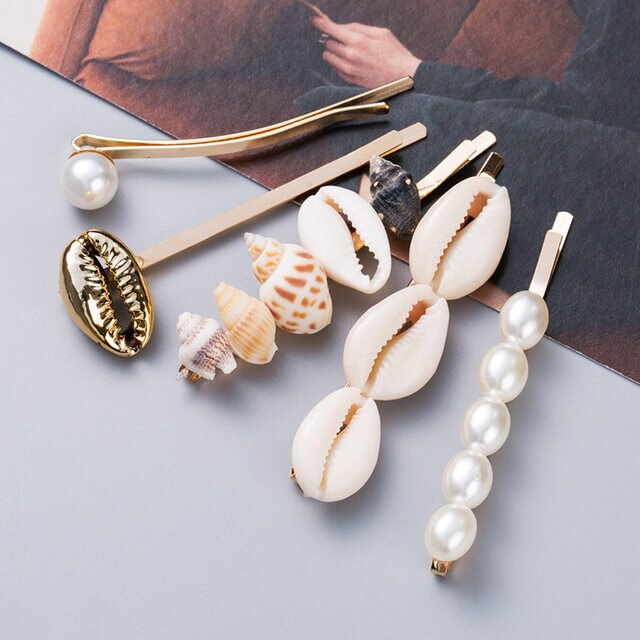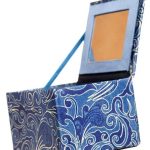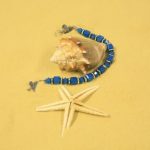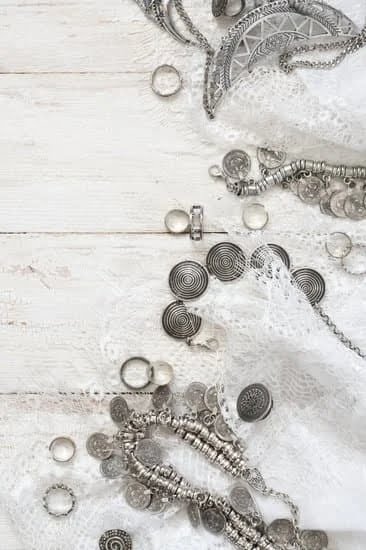If you’re looking to elevate your jewelry-making skills, mastering the art of using E6000 Jewelry and Bead Glue is a crucial step. This versatile adhesive is a go-to choice for crafters and DIY enthusiasts who want to create beautiful and durable jewelry pieces. In this article, we will explore the various ways you can utilize E6000 glue in your projects, from securely attaching beads to bonding different materials like metal, glass, and plastic.
E6000 Jewelry and Bead Glue is known for its strength and flexibility, making it ideal for various jewelry-making applications. Whether you’re a beginner or an experienced crafter, understanding how to properly use this adhesive can take your creations to the next level. From preparing surfaces correctly to ensuring a strong bond between different materials, we will guide you through the process step by step.
In addition to discussing the practical aspects of using E6000 glue for jewelry projects, we will also cover important topics such as curing and drying times, safety precautions while working with the adhesive, as well as troubleshooting common issues that may arise during the crafting process. Get ready to unleash your creativity and learn how to make stunning jewelry pieces with E6000 Jewelry and Bead Glue.
Understanding the Versatility of E6000 Glue for Jewelry and Bead Projects
E6000 Jewelry and Bead Glue is a versatile adhesive that is highly regarded in the crafting community for its strength, durability, and flexibility. This glue is specifically designed for jewelry-making and bead projects due to its ability to bond to a variety of materials, including metal, glass, plastic, and gemstones. Whether you are creating intricate beaded necklaces or elegant gemstone earrings, E6000 glue provides a reliable solution for securely attaching components together.
One of the key advantages of using E6000 glue for jewelry and bead projects is its versatility. Unlike some other adhesives that may have limited bonding capabilities or require specialized formulas for different materials, E6000 glue can be used across a wide range of surfaces. This makes it an essential tool for jewelry makers who work with diverse materials in their designs.
When using E6000 glue for jewelry-making, it is important to follow proper application techniques to ensure a strong and lasting bond. By understanding the properties of E6000 glue and how it interacts with different materials, crafters can create beautiful and durable pieces of jewelry. In the following paragraphs, we will delve into how to use E6000 Jewelry and Bead Glue effectively on various types of surfaces commonly found in bead and jewelry projects.
| Key Points | Details |
|---|---|
| Versatility | E6000 glue can bond to a wide range of materials including metal, glass, plastic, and gemstones. |
| Proper Application | Following correct techniques ensures a strong bond when using E6000 glue for jewelry-making. |
| Effective Use | Understanding the properties of E6000 glue helps create durable and beautiful pieces of jewelry. |
Step-by-Step Guide on How to Properly Prepare the Surfaces Before Applying E6000 Glue
E6000 Jewelry and Bead Glue is a versatile adhesive that is widely used in jewelry making and bead projects due to its strong bond and durability. Before using E6000 glue on your jewelry pieces, it is crucial to properly prepare the surfaces to ensure the best adhesion possible. This step-by-step guide will walk you through the process of preparing the surfaces before applying E6000 glue for your next jewelry project.
First, make sure to clean the surfaces that will be glued together. Any dirt, dust, or oils on the surfaces can prevent the glue from adhering properly. Use a small amount of rubbing alcohol on a clean cloth to wipe down the surfaces and remove any contaminants. Allow the surfaces to dry completely before proceeding with applying the E6000 glue.
Next, roughen up the surfaces that will be bonded using a fine-grit sandpaper. This will help create a better grip for the glue to adhere to. Gently sand the areas where you will apply the E6000 glue in a circular motion until they feel slightly rough to the touch. Be careful not to sand too aggressively, especially if you are working with delicate materials such as glass or crystals.
After cleaning and roughening up the surfaces, it is essential to make sure they are aligned correctly before applying E6000 Jewelry and Bead Glue. Once you have verified their positioning, carefully apply a thin layer of E6000 glue onto one of the surfaces using either a toothpick or a precision applicator tip.
Then press both surfaces together firmly and hold them in place for a few minutes to allow the bond to set. It is recommended to let the glued pieces cure for at least 24 hours before handling or wearing them.
| Preparation Steps | Description |
|---|---|
| Clean Surfaces | Wipe down with rubbing alcohol |
| Roughen Surfaces | Use fine-grit sandpaper |
| Align Surfaces | Position correctly before gluing |
Tips for Applying E6000 Glue to Different Types of Materials Such as Metal, Glass, and Plastic
Preparation Is Key
Before applying E6000 glue to any surface, it is essential to ensure that the materials are clean, dry, and free of debris. For metal surfaces, it is recommended to lightly sand or roughen the area where the glue will be applied to ensure better adhesion. Additionally, for glass and plastic materials, wiping down the surfaces with rubbing alcohol can help remove any oils or residues that could interfere with the bonding process.
Application Techniques
When working with metal, glass, or plastic materials, it is important to apply E6000 glue sparingly but evenly to avoid excess product seeping out when pressure is applied. A small amount of glue goes a long way with this adhesive. Using a toothpick or precision applicator can help control the amount of glue being spread on delicate pieces such as beads or gemstones.
Curing Process
After applying E6000 glue to metal, glass, or plastic materials, it is crucial to allow adequate time for curing and drying. The curing time can vary depending on factors such as humidity and temperature.
It is recommended to let the glued pieces sit undisturbed for at least 24 hours to achieve maximum bond strength. To ensure a strong bond between different types of materials like metal and glass, gently clamp the pieces together or use painter’s tape to hold them in place while they cure.
By following these tips for applying E6000 glue to different types of materials such as metal, glass, and plastic in your jewelry and bead projects, you can create stunning and durable pieces that will withstand the test of time. Remember that proper preparation, application techniques, and allowing sufficient curing time are key factors in achieving successful results when using this versatile adhesive.
How to Securely Attach Beads and Gemstones Using E6000 Glue
E6000 glue is a versatile adhesive that is commonly used in jewelry and bead projects due to its strong bonding properties. When it comes to attaching beads and gemstones to various surfaces, E6000 glue provides a reliable solution for creating durable and long-lasting designs. Here is a step-by-step guide on how to securely attach beads and gemstones using E6000 glue:
1. Prepare your workspace: Before starting your project, make sure to clean the surfaces where you will be attaching the beads or gemstones. Use rubbing alcohol or a gentle cleaner to remove any dirt, oils, or residue that could prevent the glue from adhering properly.
2. Apply the E6000 glue: Squeeze a small amount of E6000 glue onto a disposable surface, such as wax paper or a plastic lid. Use a toothpick or small applicator tool to pick up a small dab of glue and apply it directly to the back of the bead or gemstone.
3. Attach the bead or gemstone: Carefully place the bead or gemstone onto the desired surface, applying slight pressure to ensure proper adhesion. Hold it in place for a few moments to allow the glue to set.
By following these steps, you can effectively use E6000 glue to securely attach beads and gemstones in your jewelry projects. This adhesive is particularly suitable for creating intricate designs with added embellishments, giving you endless possibilities for your creations.
Additionally, remember that curing and drying times may vary depending on factors such as temperature and humidity. Be sure to let your project dry completely before handling it to ensure a strong bond between the beads, gemstones, and other materials used in your jewelry piece. With proper application and care, E6000 glue can help you achieve professional-looking results in your jewelry making endeavors.
Curing and Drying Times for E6000 Glue and How to Ensure a Strong Bond
E6000 glue is a popular adhesive choice for jewelry and bead projects due to its strong bonding capabilities. Understanding the curing and drying times of this glue is essential to ensure a secure and long-lasting bond between your materials.
When using E6000 glue, it is important to allow sufficient time for the adhesive to cure properly. The initial drying time for E6000 glue is approximately 20 minutes, during which the glue will become tacky. However, for a full cure and maximum bond strength, it is recommended to let the project sit undisturbed for at least 24 to 72 hours. This extended curing time allows the adhesive to fully set and create a durable connection between the surfaces.
To ensure a strong bond when using E6000 glue for jewelry and bead projects, proper application techniques are crucial. Make sure to follow the manufacturer’s instructions closely and apply a thin, even layer of glue onto both surfaces that you wish to bond together. Press the materials firmly together, ensuring that there are no gaps or air bubbles between them. Additionally, applying some pressure or clamping the pieces together while the glue cures can help enhance the bond strength.
In order to achieve optimal results with E6000 jewelry and bead glue, it is important to store your project in a well-ventilated area while it dries. Avoid exposing the adhesive to water or extreme temperatures during the curing process, as this can affect its effectiveness. By following these guidelines on curing and drying times for E6000 glue, you can create stunning and durable jewelry pieces that will stand the test of time.
Safety Precautions and Best Practices When Working With E6000 Glue
Proper Ventilation and Protective Gear
When working with E6000 Jewelry and Bead Glue, it is crucial to ensure that you are in a well-ventilated area. The fumes from the glue can be strong, so opening windows or working in an open space is recommended. Additionally, wearing protective gear such as gloves and a mask can help prevent any irritation or allergic reactions to the adhesive.
Handling and Storage
It is essential to handle E6000 glue with care to avoid any skin contact or accidental ingestion. Keep the glue away from children and pets, and always store it in a cool, dry place away from direct sunlight. Make sure the cap is securely closed after each use to prevent the glue from drying out.
Clean-Up Tips
To clean up any excess E6000 glue, it is best to use a solvent like acetone or rubbing alcohol. However, be cautious when using solvents and make sure to work in a ventilated area. Avoid touching the glue with bare hands and use tools like toothpicks or cotton swabs for precise application and clean-up.
By following these safety precautions and best practices, you can enjoy creating beautiful jewelry and bead projects with E6000 glue while minimizing any potential risks associated with its use.
Examples of Stunning Jewelry and Bead Projects Made Using E6000 Glue
E6000 Jewelry and Bead Glue is a versatile adhesive that is commonly used in jewelry making and bead projects. When used correctly, this adhesive can create stunning pieces of wearable art that are both durable and long-lasting. Here are some examples of beautiful jewelry and bead projects that can be made using E6000 glue:
- Crystal Statement Necklace: Create a bold and elegant statement necklace by securely attaching various sizes of crystals or rhinestones to a metal chain using E6000 glue. The strong bond created by the adhesive will ensure that your crystals stay in place even with regular wear.
- Gemstone Cluster Earrings: Design unique gemstone cluster earrings by carefully arranging different gemstones on metal earring posts and securing them with E6000 glue. This adhesive is perfect for bonding gemstones of varying shapes and sizes together, creating eye-catching earrings that are sure to make a statement.
- Beaded Bracelet: Craft a colorful beaded bracelet by stringing together an assortment of beads and using E6000 glue to attach decorative charms or focal beads. The adhesive will securely hold the beads in place, allowing you to create intricate and personalized designs for your bracelet.
No matter what type of jewelry or bead project you have in mind, learning how to use E6000 Jewelry and Bead Glue effectively is essential for creating professional-looking pieces that will stand the test of time. By following the proper techniques for preparing surfaces, applying the adhesive, and ensuring a strong bond, you can create stunning jewelry creations that showcase your creativity and craftsmanship.
So whether you are looking to make a dazzling crystal necklace, intricate gemstone earrings, or a colorful beaded bracelet, E6000 glue is the perfect adhesive to bring your vision to life. Explore the endless possibilities of using E6000 glue in your jewelry making projects and watch as your creations come to life with beauty and durability.
Troubleshooting Common Issues When Using E6000 Glue for Jewelry Making
When working on jewelry and bead projects, it is common to encounter some issues when using E6000 glue. While this adhesive is known for its strong bond and versatility, there are certain factors that can affect the success of your project. One common issue that crafters may face is the glue not drying or curing properly. This can be frustrating, especially if you have spent time and effort on your creation.
To troubleshoot this problem, first check the expiration date of your E6000 glue. Using expired or old glue can affect its effectiveness. Also, make sure that you have followed the instructions on the packaging regarding application and curing times. Additionally, consider the temperature and humidity levels in your workspace – extreme temperatures or high humidity can slow down the drying process. If needed, use a fan or dehumidifier to create an optimal environment for the glue to cure properly.
Another common issue when using E6000 glue for jewelry making is the bonding strength not meeting your expectations. To address this problem, ensure that you have prepared the surfaces properly before applying the glue. Clean the materials with rubbing alcohol to remove any dirt, oil, or residue that could affect adhesion.
Roughening up smooth surfaces with sandpaper can also help create a stronger bond. Additionally, apply pressure to the bonded pieces and allow sufficient curing time as specified by the manufacturer for a secure attachment of beads and gemstones using E6000 glue.
Lastly, if you find that your jewelry or bead project has not turned out as expected after using E6000 glue, do not panic. There are ways to salvage your creation. For example, if excess glue has seeped out from between the beads or gemstones, carefully remove it with a toothpick or cotton swab dipped in acetone or nail polish remover before it fully dries.
If there are gaps in the bond between materials, you can fill them in with more E6000 glue and press the pieces together again until they set properly. By addressing these common issues proactively and knowing how to troubleshoot them effectively, you can elevate your jewelry making skills and create stunning pieces with confidence using E6000 jewelry and bead glue.
Where to Purchase E6000 Glue and Other Essential Tools for Jewelry and Bead Crafting
E6000 Jewelry and Bead Glue has become a staple adhesive in the world of jewelry making and bead crafting due to its strong bonding capabilities across a variety of materials. Knowing how to use E6000 glue effectively can greatly enhance the quality and durability of your projects. By following the proper steps outlined in this guide, you can ensure that your jewelry pieces are securely assembled with a professional finish.
To begin using E6000 Jewelry and Bead Glue, it is crucial to properly prepare the surfaces that will be bonded. Cleaning the surfaces thoroughly and ensuring they are dry before applying the glue will help promote adhesion. Additionally, understanding the different techniques for applying E6000 glue to various materials such as metal, glass, and plastic can make a significant difference in the overall outcome of your jewelry piece.
When attaching beads and gemstones using E6000 glue, it is important to follow specific guidelines to ensure a secure bond. By allowing adequate curing and drying times for the glue, you can prevent any potential issues with your jewelry piece coming apart.
Utilizing safety precautions while working with E6000 glue is also essential to protect yourself from any harmful fumes or skin irritation. Overall, mastering the art of using E6000 Jewelry and Bead Glue will enable you to create stunning and long-lasting pieces that showcase your craftsmanship and creativity.
Frequently Asked Questions
How Long Does It Take E6000 Jewelry and Bead Glue to Dry?
E6000 Jewelry and Bead Glue typically takes about 24 to 72 hours to fully cure, depending on the temperature and humidity of the environment. It is best to wait for this curing period before handling the glued objects.
What Is E6000 Jewelry and Bead Glue Used For?
E6000 Jewelry and Bead Glue is commonly used for a variety of crafting projects involving jewelry-making, beadwork, and accessory assembly. Its strong adhesive properties make it ideal for bonding different materials such as metal, glass, fabric, wood, and ceramics.
What Should You Not Use E6000 On?
While E6000 Jewelry and Bead Glue is versatile and durable, there are some materials it should not be used on due to possible damage or ineffectiveness. These include some plastics like polyethylene and polypropylene, as well as Styrofoam and certain types of rubber that may not bond well with the glue.

Welcome to my jewelry blog! My name is Sarah and I am the owner of this blog.
I love making jewelry and sharing my creations with others.
So whether you’re someone who loves wearing jewelry yourself or simply enjoys learning about it, be sure to check out my blog for insightful posts on everything related to this exciting topic!





